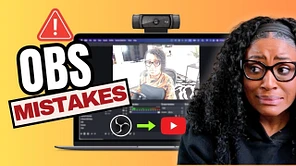I picked up the Fifine K669B USB microphone for twenty-five dollars on Amazon just to see how it stacks up against some of my higher-end mics.
I wasn’t expecting much at this price point, but it surprised me. I wanted to know if a true budget mic could hold its own next to something like the Shure SM57 Pro XLR Dynamic Microphone or the Blue Yeti USB Microphone, and the results were interesting.
First Impressions
Out of the box, the build quality feels far better than the price would suggest. The entire body is metal, including the volume knob, and it feels sturdy in the hand. The included tripod stand works, but it sits low on the desk. I found myself leaning forward to get close enough to it, so a small boom arm is definitely worth adding if you plan to record often.
The mic comes in several colors: black, silver, blue, green, red, and white which is a nice touch if you care about matching your setup. I went with black since it blends in with the rest of my gear.
Plug and Play Setup
The Fifine K669B connects directly to your computer through USB and doesn’t require an audio interface, which makes setup simple. I tested it on a 14-Inch Apple MacBook Pro M2, and it was plug-and-play with no drivers needed.
The built-in volume knob on the front gives you quick control over your input level. The mic is unidirectional, meaning it captures sound mainly from the front, so you’ll want to talk into the side with the knob facing you. If you speak into the back, it will sound thin and distant.
Comparing the Sound
This is where things got interesting. I compared the Fifine K669B to a few of my go-to mics: the Shure SM57 Pro XLR Dynamic Microphone, Blue Yeti USB Microphone, Apogee Mic 96k, and even the built-in mic on the iPhone 14 Pro Max.
Right away, the Fifine sounded cleaner and fuller than the iPhone mic, with much less room noise. Against the Blue Yeti and SM57, it lacked a bit of midrange body and low-end warmth the sound is thinner out of the box but with a little EQ, it gets surprisingly close.
Once I adjusted the EQ curve in GarageBand, I could make the Fifine sound nearly as full as the Shure. You can’t expect the same depth or dynamic range as a professional XLR mic with a proper interface, but for a plug-and-play setup, it’s impressive.
Everyday Use
I tested the Fifine K669B for voiceovers, talking head videos, and casual recordings. The clarity is great for spoken word, and it handles basic streaming or podcasting without any trouble. It doesn’t include a pop filter, so you’ll want to add one even a simple foam mic windscreen helps tame harsh plosives and keeps your sound clean.
Keep the mic upright and make sure it’s positioned about six to eight inches away from your mouth. That’s the sweet spot for the best tone.
How It Stacks Up
If you’re just starting out or need something better than your laptop or phone mic, this is an easy upgrade. The higher-end microphones still win when it comes to richness and background noise control, but for twenty-five dollars, the Fifine K669B delivers way more than you’d expect.
You’ll spend more to build out a full XLR setup the Shure SM57, for example, requires an audio interface, an XLR cable, and a stand and that adds both cost and complexity. The Fifine keeps it simple: one cable, one mic, and you’re ready to record.
Final Thoughts
The Fifine K669B isn’t a studio mic, but it’s proof that you don’t have to spend a fortune to get solid sound. It’s perfect for beginner creators, podcasters, or anyone looking for a simple setup that still sounds professional with a little post-processing.
Would I recommend it? Absolutely. If you’re on a budget or just getting started, this is one of the easiest, most affordable upgrades you can make.
Setup Used for This Tutorial
Fifine K669B USB Condenser Microphone
USB Camera Adapter (for iPhone use)
Shure SM57 Pro XLR Dynamic Microphone
Logitech for Creators Blue Yeti USB Microphone
Apogee Mic 96k (current alternative)
Affiliate Disclosure
Some links in this post are affiliate links, which means I may earn a small commission if you make a purchase. I only recommend gear I personally use and trust in my production workflow.


